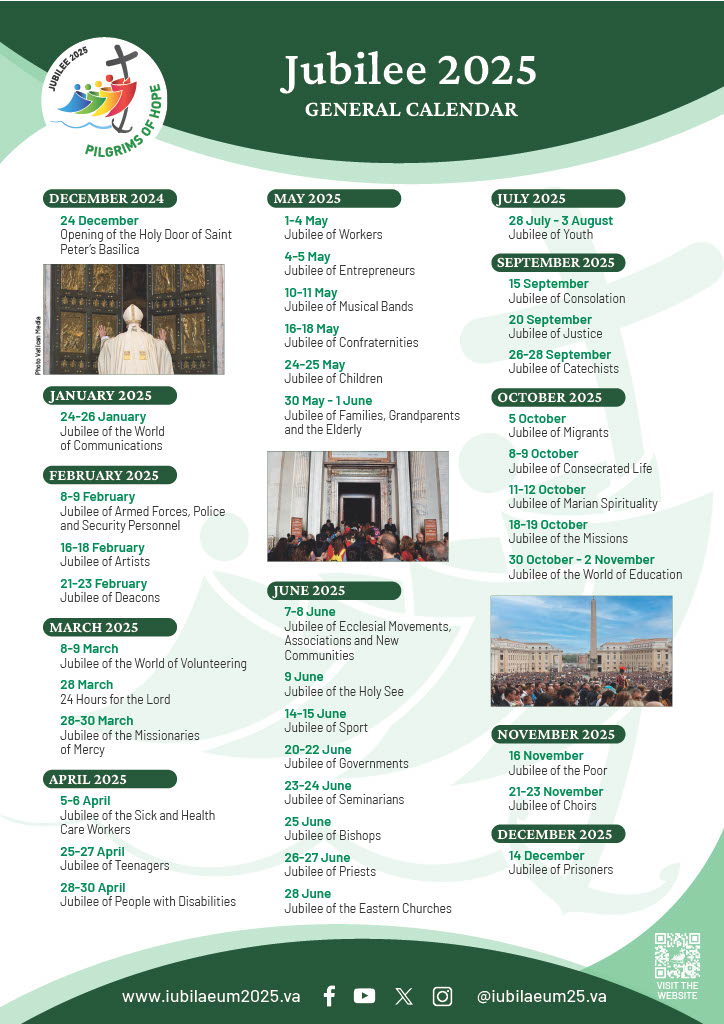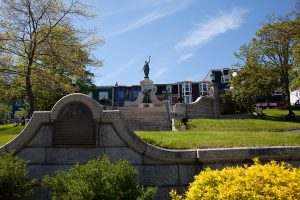Monica O’Reilly was born in Argentia on January 16,1869 and was educated by the Presentation Sisters in Placentia. She taught in Argentia for a number of years until 1892 when the death of her aged mother made it possible for her to leave home.
 She entered the Sisters of Mercy in St. Lawrence that same year and at her reception into the novitiate was given the name Sister Mary Cecilia, although throughout her life, she was known as Sister M. Cecily. She was professed in August of 1906 and remained in St. Lawrence until September of 1917, when she was named a member of the new foundation on Bell Island, St. Edwards. When a second Convent of Mercy, Immaculate Conception, opened on Bell Island at the Mines Sister M. Cecily became its first superior. With her in community were Sister M. Alphonsus McNamara, Sister M. Gabrielle Carter and Sister M. Madeline Aylward. Sister M. Gabrielle died on Bell Island and is the only Sister of Mercy buried there.
She entered the Sisters of Mercy in St. Lawrence that same year and at her reception into the novitiate was given the name Sister Mary Cecilia, although throughout her life, she was known as Sister M. Cecily. She was professed in August of 1906 and remained in St. Lawrence until September of 1917, when she was named a member of the new foundation on Bell Island, St. Edwards. When a second Convent of Mercy, Immaculate Conception, opened on Bell Island at the Mines Sister M. Cecily became its first superior. With her in community were Sister M. Alphonsus McNamara, Sister M. Gabrielle Carter and Sister M. Madeline Aylward. Sister M. Gabrielle died on Bell Island and is the only Sister of Mercy buried there.
The opening of Immaculate Conception Convent was a great advantage for the sisters who taught at the Mines and who had been commuting daily from St. Edward’s Convent from 1919 to 1927 by horse and carriage or in winter by horse and sleigh.
The school had four classrooms for approximately four hundred children. Sisters M. Cecily and M. Madeline shared the largest classroom that accommodated one hundred twenty children from grades One to Three. The two devised a system that helped make the learning environment better for both teachers and students. Sister M. Madeline described it as follows:
We used to take the children on the corridor in groups to teach them
in order to give the other teacher a chance to work with the remaining
group. Sister M. Cecily had monitors and any other helps she cou
procure … special emphasis was put on reading, writing, spelling,
arithmetic and religion.
From 1934 to 1941 Sister M. Cecily lived and ministered at one or other of these convents on Bell Island until failing health brought her to St. Michael’s Convent, Belvedere where she spent the remainder of her days. At her death in June 1945 many Bell Islanders came to pay their respects and to show their appreciation for her presence and her ministry among them over many years.
An item in the Daily News following her death spoke of Sister M. Cecily’s “exemplary life as a Sister of Mercy and her devoted work as a teacher, a character builder and a social worker … the work she did for education and uplifting of youth can be known only to the good God for whom she so zealously and so cheerfully laboured.”
Monica O’Reilly nació en Argentia el 16 de enero de 1869 y fue educada por las Hermanas de la Presentación en Placentia. Enseñó en Argentia durante varios años hasta 1892, cuando la muerte de su anciana madre le permitió abandonar su hogar.
Ese mismo año ingresó en las Hermanas de la Misericordia de San Lorenzo y en el noviciado recibió el nombre de Hermana Mary Cecilia, aunque durante toda su vida fue conocida como Hermana M. Cecily. Profesó en agosto de 1906 y permaneció en San Lorenzo hasta septiembre de 1917, cuando fue nombrada miembro de la nueva fundación de la isla de Bell, en San Eduardo. Cuando se abrió un segundo Convento de la Misericordia, la Inmaculada Concepción, en Bell Island, la Hermana M. Cecily se convirtió en su primera superiora. Con ella estaban en comunidad Sor M. Alphonsus McNamara, Sor M. Gabrielle Carter y Sor M. Madeline Aylward. La Hermana M. Gabrielle murió en Bell Island y es la única Hermana de la Misericordia enterrada allí.
La apertura del Convento de la Inmaculada Concepción supuso una gran ventaja para las hermanas que enseñaban en las Minas y que habían estado desplazándose diariamente desde el Convento de San Eduardo desde 1919 hasta 1927 en coche de caballos o, en invierno, en caballo y trineo.
La escuela tenía cuatro aulas para unos cuatrocientos niños. Las hermanas M. Cecily y M. Madeline compartían el aula más grande, que acogía a ciento veinte niños de primero a tercero. Las dos idearon un sistema que ayudaba a mejorar el ambiente de aprendizaje tanto para los profesores como para los alumnos. La hermana M. Madeline lo describió así:
Solíamos llevar a los niños al pasillo en grupos para enseñarles
para que el otro profesor pudiera trabajar con el grupo restante.
grupo. La hermana M. Cecily tenía monitores y cualquier otra ayuda que pudiera conseguir.
Se hacía especial hincapié en la lectura, la escritura, la ortografía, la aritmética y la religión,
aritmética y religión.
De 1934 a 1941, la hermana M. Cecily vivió y ejerció su ministerio en uno u otro de estos conventos de la isla de Bell, hasta que su débil salud la llevó al convento de San Miguel, en Belvedere, donde pasó el resto de sus días. A su muerte, en junio de 1945, muchos habitantes de Bell Island acudieron a presentar sus respetos y a mostrar su agradecimiento por su presencia y su ministerio entre ellos durante muchos años.
Un artículo publicado en el Daily News tras su muerte hablaba de la «vida ejemplar de la Hermana M. Cecily como Hermana de la Misericordia y de su abnegada labor como maestra, forjadora del carácter y trabajadora social… el trabajo que realizó en pro de la educación y la elevación de la juventud sólo puede ser conocido por el buen Dios por el que tan celosa y alegremente trabajó».


 The spirit of Mercy is alive, vibrant and visible!
The spirit of Mercy is alive, vibrant and visible! She entered the Sisters of Mercy in St. Lawrence that same year and at her reception into the novitiate was given the name Sister Mary Cecilia, although throughout her life, she was known as Sister M. Cecily. She was professed in August of 1906 and remained in St. Lawrence until September of 1917, when she was named a member of the new foundation on Bell Island, St. Edwards. When a second Convent of Mercy, Immaculate Conception, opened on Bell Island at the Mines Sister M. Cecily became its first superior. With her in community were Sister M. Alphonsus McNamara, Sister M. Gabrielle Carter and Sister M. Madeline Aylward. Sister M. Gabrielle died on Bell Island and is the only Sister of Mercy buried there.
She entered the Sisters of Mercy in St. Lawrence that same year and at her reception into the novitiate was given the name Sister Mary Cecilia, although throughout her life, she was known as Sister M. Cecily. She was professed in August of 1906 and remained in St. Lawrence until September of 1917, when she was named a member of the new foundation on Bell Island, St. Edwards. When a second Convent of Mercy, Immaculate Conception, opened on Bell Island at the Mines Sister M. Cecily became its first superior. With her in community were Sister M. Alphonsus McNamara, Sister M. Gabrielle Carter and Sister M. Madeline Aylward. Sister M. Gabrielle died on Bell Island and is the only Sister of Mercy buried there.
